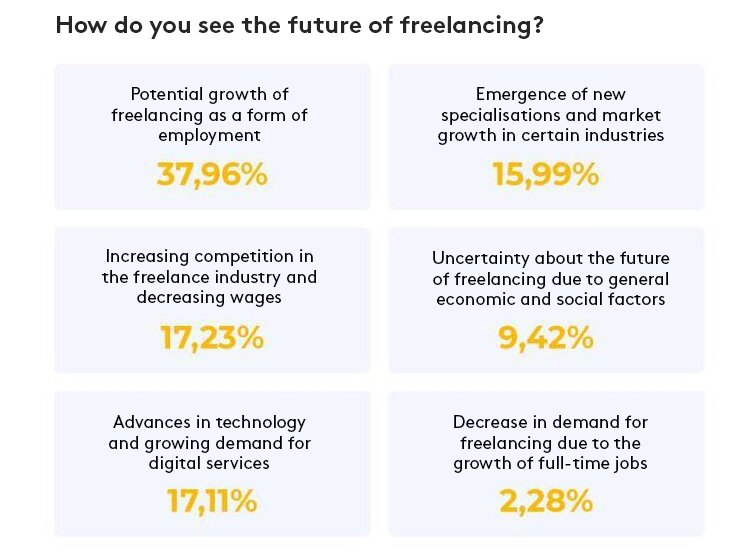"The war sparked a boom in the freelance market": How much do freelance workers earn, and what fields do they choose?
Mind has selected the most interesting figures from the study
For many Ukrainians, freelancing has become a lifeline. The war has increased the demand for self-employment among specialists: after February 24, 2022, the share of new freelancers among the total number of freelancers reached 40.67%. Despite the economic crisis in Ukraine, this form of employment continues to thrive. "For small and medium online businesses, it is an accessible resource of skilled professionals who help entrepreneurs with development and entering new markets," according to the recent study by the Freelancehunt exchange titled "Portrait of a Freelancer 2023: How the war has influenced income, workload, and employment". Mind has selected the most interesting figures from this analytics.
Over $3000
This is the maximum income level in the freelance market. According to the study, the highest percentage of specialists earning $3000+ falls under the Promotion category, accounting for 8.33%. Among those earning $2000–$3000, the majority of freelancers are in the Services category.
Developers most commonly reported incomes ranging from $1000 to $2000. "However, it should be noted that these specialists primarily come to Freelancehunt for side jobs or projects that interest them," clarify the authors of the study.
Specialists in all popular fields such as developers, copywriters, translators, designers, marketers, and those offering various services earn between $500 and $1000 per month. Those earning below $500 are predominantly copywriters and translators.
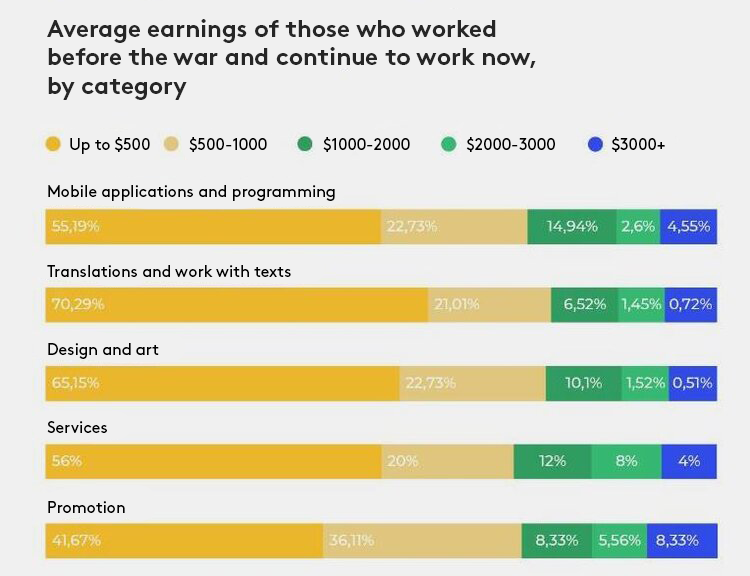
"For a more relevant assessment, freelancers who were working before the war and continue to do so were taken into account. Since the war sparked a boom in the freelance market, it has attracted a significant number of newcomers with enhanced hard skills. However, their level of soft skills, which are equally important in freelancing, is at a basic level. Newcomers need time to gain the necessary experience and adjust," explain the researchers regarding the obtained salary level data.
39,51%
That's the percentage of respondents who worked before the war and continue to do so but have reported a decrease in their income. "It is influenced by the necessity to regularly go to the shelter, past (hopefully) issues with electricity, and the overall economic situation of the country. However, if we consider statistics for the entire country, not just the freelance market, the picture looks like this: 77% of Ukrainians have experienced a decrease in income, 7% have seen an increase, and the income of 16% of Ukrainians has remained unchanged," explain the researchers.
However, 32.56% of freelancers mentioned that their income has increased, while for 27.93%, it remained unchanged.

55,73%
For those respondents, freelancing is not their sole source of income. However, nearly half of the respondents (44%) provided the opposite answer. "It should be noted that due to the war, there are many beginners who are transitioning to full-time freelancing," clarifies the study.
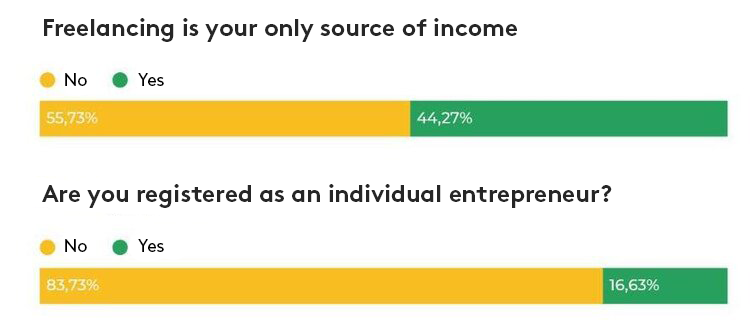
40–50
That's the number of hours per week freelancers with incomes ranging from $2000 to $3000+ work. Those earning between $500 and $2000 dedicate 20-30 hours to freelancing, while those earning below $500 work no more than 20 hours.
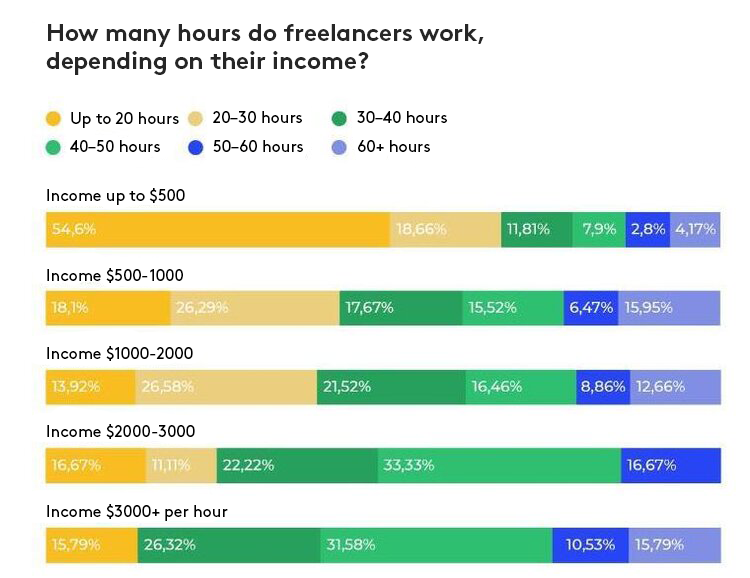
Interestingly, the majority of respondents (35.99%) for whom freelancing is their sole source of income work only up to 20 hours per week. 21.69% mention working 20–30 hours, 15.66% work 30–40 hours, 13.1% work 40–50 hours, 8.73% work over 60 hours, and 4.82% work 50–60 hours.
As for those who freelance for side jobs, the majority (53.71%) are predominantly engaged for fewer than 20 hours.
32,5%
Mast freelancers are involved in design and art. The second and third most popular categories are Programming (19.99%) and Work with texts (19.38%).
"Compared to the previous year, there have been no changes among the leading categories. However, there has been an influx of translators, as the percentage of freelancers in this field has increased from 3.94% to 5.38% compared to the previous year," specify the researchers.
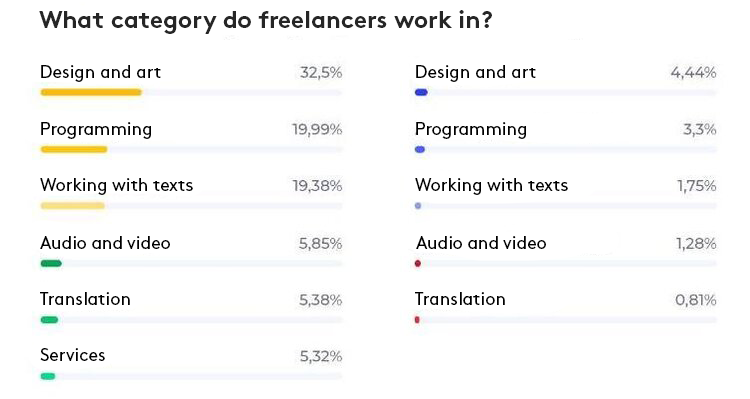
37,96%
That's the percentage of respondents who anticipate potential growth for freelancing as a form of employment in the future. 17.11% are hopeful for technological advancements and increased demand for digital services, while 15.99% expect the emergence of new specialisations and market growth in specific industries.
"Of course, there are those who feel uncertain about the future of freelancing due to general economic and social factors (9.42%). 17.23% believe there will be more competition and lower wages. Only 2.28% anticipate a decrease in demand for freelancing," the researchers indicate.
